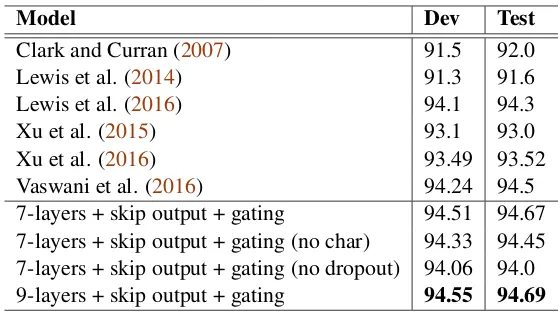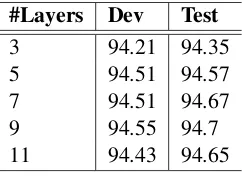An Empirical Exploration of Skip Connections for Sequential Tagging
Full text
Figure


Related documents
A study is performed to investigate the impact that the under-relaxation factor has on the convergence of the conjugate solution, and to identify the optimum value to use. 2 s ) for
That is, Commissions produce a rational and scientific administrative discourse out of the raw materials of political struggle and debate.Q Although this process constantly
In- direct, or mediated, effects on NPS via sleep were sup- ported for the following specific psychosocial work factors; positive challenges at work, role conflict, decision
Methods: EOSQ-24-G and the KINDL R questionnaire were given to families with EOS children who had been treated by either vertical expandable prosthetic titanium rib implants
Therefore, the aim of this study was to describe back beliefs in a mixed clinical LBP population of chiropractic patients and investigate if specific patient characteristics
BB: Bony bridging; BC: Bony callus; c: Mesenchymal stem cells density; CC: Cartilaginous callus; d: Callus thickness; D: Diffusion coefficient of mesenchymal stem cells; E:
3 Comparison of BMD, BV/TV (%) and Tb/Sp value between BMSCs plus other intervention groups and control group.. The included studies were not limited to a single
Good results with serial Risser casts have been reported in patients with idiopathic early onset scoliosis (IS) [ 8 ].. Only few studies of serial Risser casting in EOS patients